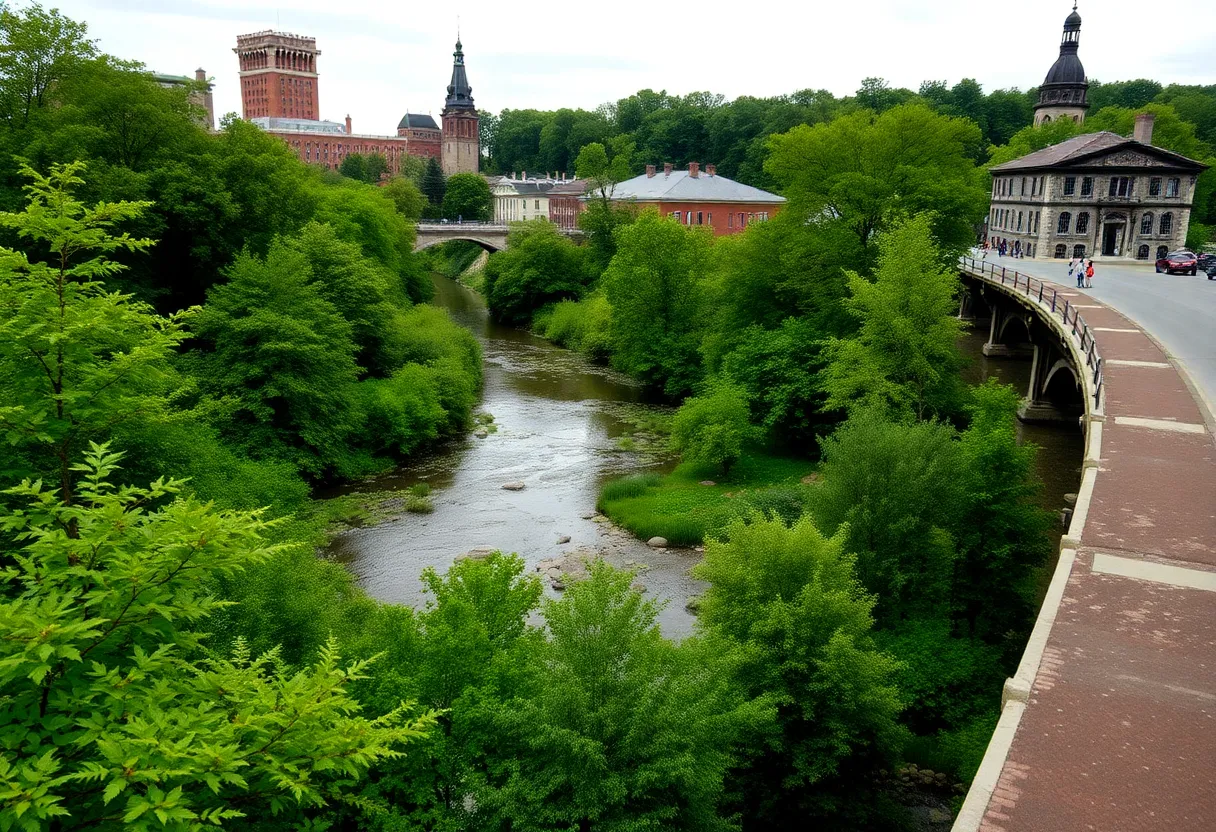Buffalo, NY, October 5, 2025
The Scajaquada Creek corridor in Buffalo has been officially designated as a national heritage site. This significant designation will protect the area’s ecological and cultural values while promoting tourism and economic growth. The corridor, important for its biodiversity and historical connections to Indigenous communities, will receive enhanced protections against harmful developments.
Buffalo’s Scajaquada Creek Corridor Designated as National Heritage Site
Buffalo, NY – In a groundbreaking development, the Scajaquada Creek corridor has received official designation as a national heritage site, marking a significant step toward protecting its unique ecological and cultural value. This decision, finalized within the last 48 hours, ensures heightened safeguards for the area’s natural features and historical importance, while local authorities anticipate it will spur economic growth through increased tourism.
The designation encompasses the entire corridor of Scajaquada Creek, a vital waterway that winds through urban and suburban landscapes in Buffalo. This status, granted by federal preservation authorities, recognizes the corridor’s role in supporting diverse wildlife habitats, including wetlands and forested areas, as well as its contributions to the region’s Indigenous and industrial history. Enhanced protections will now prevent harmful developments that could disrupt the site’s integrity, such as unchecked construction or pollution sources. Officials emphasize that this move aligns with broader national efforts to conserve urban green spaces that blend nature with human heritage.
Ecological and Cultural Impacts
The Scajaquada Creek corridor stands out for its biodiversity, hosting species of fish, birds, and plants that thrive in its riparian zones. Environmental experts note that the area’s waterways have long served as a corridor for migration and a buffer against urban flooding. Culturally, the site holds deep significance for Native American communities, whose historical ties to the land date back centuries, alongside remnants of 19th-century infrastructure that shaped Buffalo’s growth as an industrial hub. The heritage status mandates ongoing monitoring and restoration projects to maintain these elements, ensuring the corridor remains a living testament to both environmental resilience and cultural evolution.
Conservationists have long advocated for this protection, pointing to previous threats like invasive species and urban runoff that have degraded parts of the creek. With the new designation, funding opportunities for cleanup and habitat rehabilitation are expected to increase, potentially transforming polluted sections into accessible recreational spaces. Local environmental groups are already planning community-led initiatives, such as trail maintenance and educational programs, to engage residents in the preservation effort.
Economic and Community Benefits
Local leaders view the designation as a catalyst for sustainable development, predicting a surge in eco-tourism that could benefit nearby businesses. Visitors drawn to the site’s heritage value might explore hiking paths, interpretive signage, and wildlife viewing areas, injecting vitality into Buffalo’s tourism sector. Preliminary estimates suggest that similar heritage sites nationwide have boosted local economies by drawing history enthusiasts and nature lovers, fostering job creation in areas like guiding services and hospitality.
For Buffalo residents, the decision promises improved quality of life through expanded green infrastructure. The corridor’s preservation could enhance neighborhood connectivity, offering safe routes for cyclists and pedestrians while promoting mental health benefits associated with access to nature. Community feedback gathered during the designation process highlighted widespread support, with many expressing hope that it will deter future encroachments on public lands.
Implementation and Future Outlook
Moving forward, a management plan will outline specific actions, including restrictions on land use and partnerships with federal agencies for enforcement. Annual reports will track progress on conservation goals, with public input sessions scheduled to keep stakeholders involved. This designation not only secures the Scajaquada Creek corridor for future generations but also positions Buffalo as a leader in balancing urban expansion with environmental stewardship.
The broader context of this achievement reflects a growing national priority on heritage preservation amid climate challenges. Urban waterways like Scajaquada Creek are increasingly valued for their roles in flood mitigation and carbon sequestration, making such protections timely. As Buffalo adapts to these changes, the corridor’s elevated status serves as a model for other cities grappling with similar preservation needs.
Frequently Asked Questions (FAQ)
- What is the significance of the Scajaquada Creek corridor’s designation?
-
The designation as a national heritage site preserves its ecological and cultural significance, ensuring protections for wildlife habitats, historical ties, and urban green spaces.
- When was the designation finalized?
-
The decision was finalized within the last 48 hours.
- What protections does the designation provide?
-
It includes heightened safeguards to prevent harmful developments, pollution, and disruptions, with funding for restoration and monitoring.
- How will this impact the local economy?
-
Local authorities anticipate boosts in tourism, job creation in hospitality and guiding, and sustainable development for nearby businesses.
- What community benefits are expected?
-
Residents will gain improved access to recreational spaces, enhanced neighborhood connectivity, and initiatives for education and engagement.
Key Features of the Scajaquada Creek Corridor Heritage Designation
| Feature | Description |
|---|---|
| Ecological Preservation | Protects biodiversity, wetlands, and migration corridors for wildlife. |
| Cultural Significance | Recognizes Indigenous history and industrial heritage tied to the land. |
| Protections Implemented | Restrictions on development, pollution controls, and funded restoration projects. |
| Tourism Boost | Expected increase in visitors for hiking, wildlife viewing, and educational sites. |
| Community Engagement | Plans for trails, public input, and recreational access to enhance quality of life. |
This chart summarizes the primary aspects of the designation, highlighting its balanced approach to conservation and growth.
Deeper Dive: News & Info About This Topic
HERE Resources
Buffalo Manufacturing Sector Experiences Significant Sales Growth
Elaine Swords Passes Away in Buffalo, NY
Scajaquada Creek Corridor Designated as National Heritage Area




